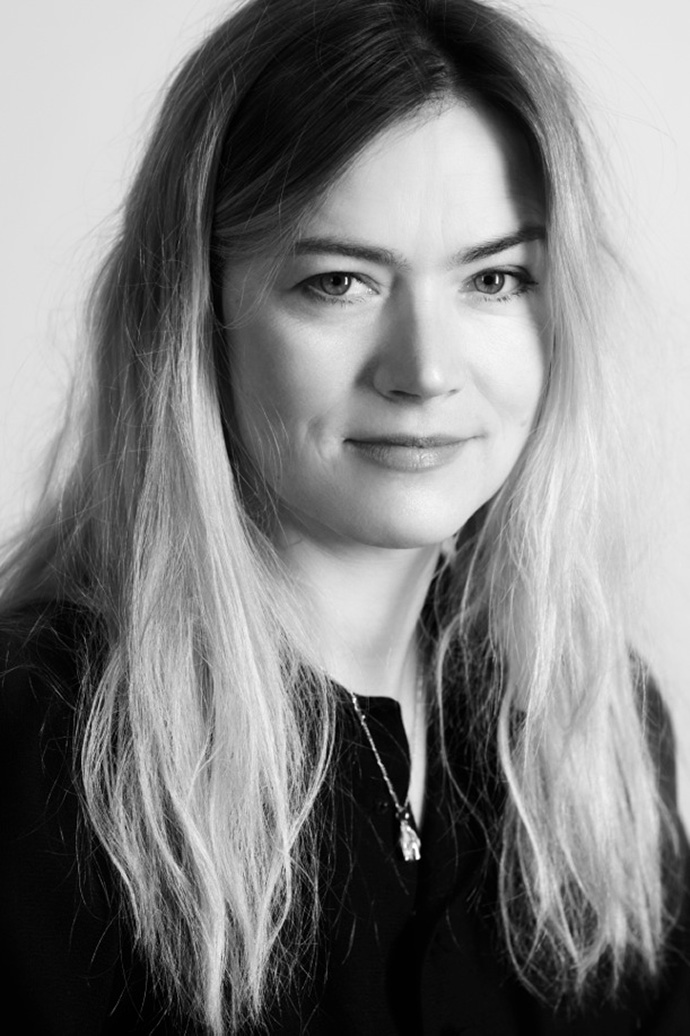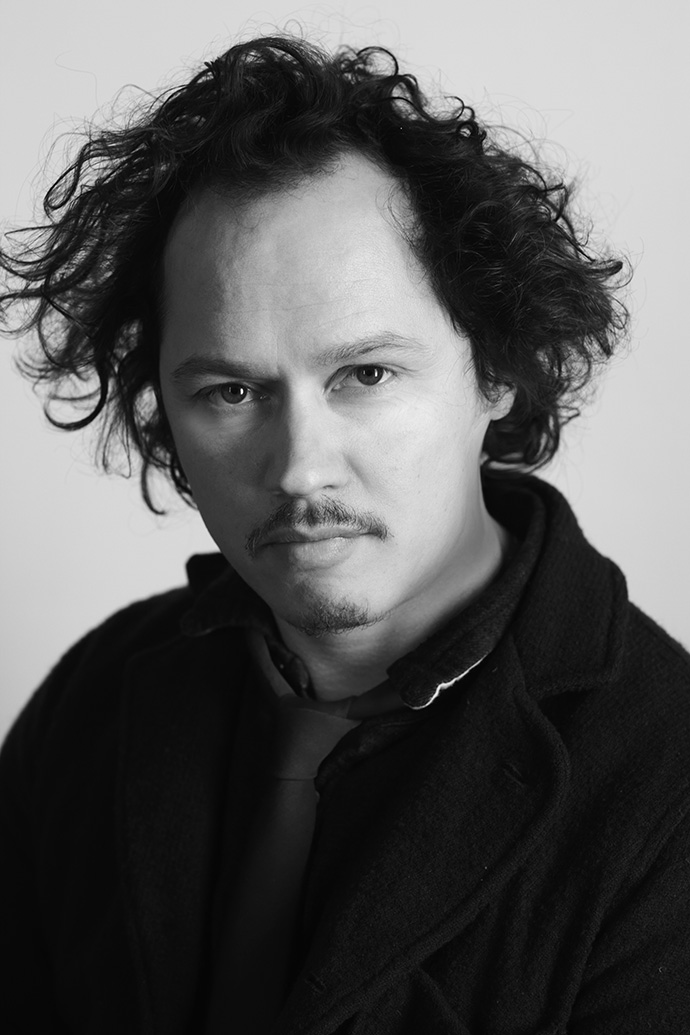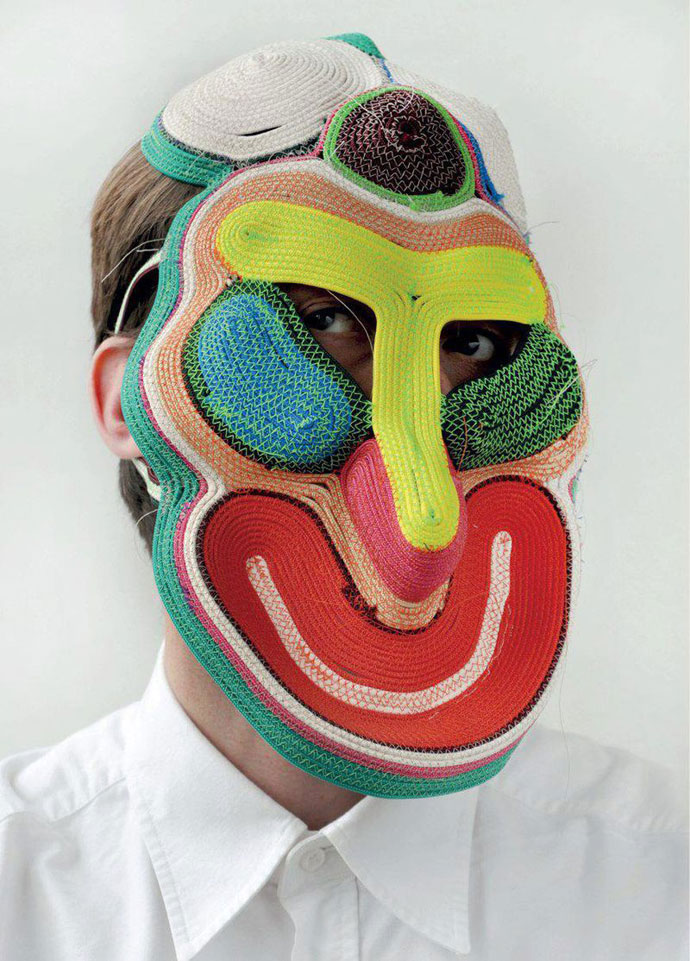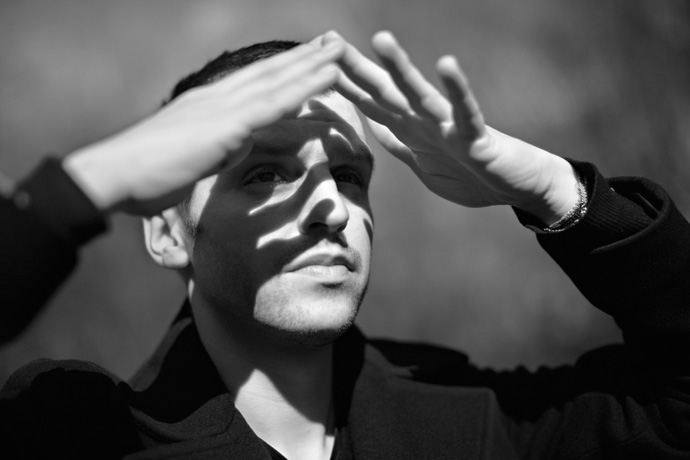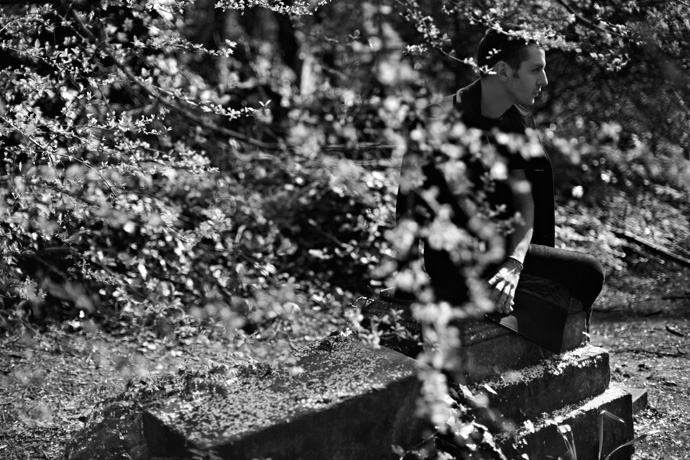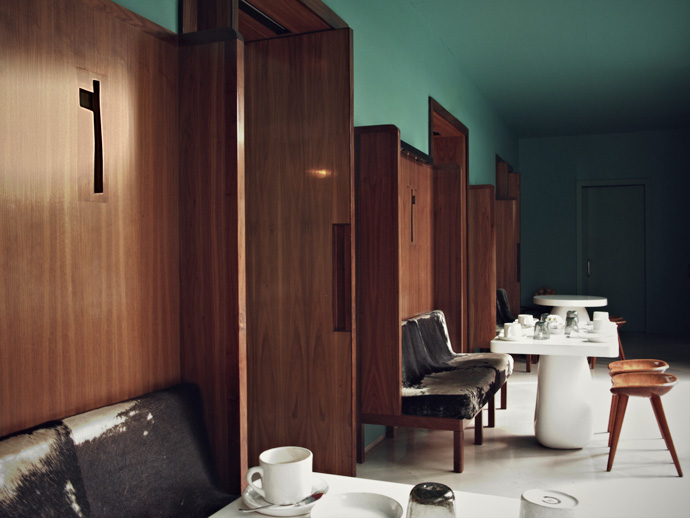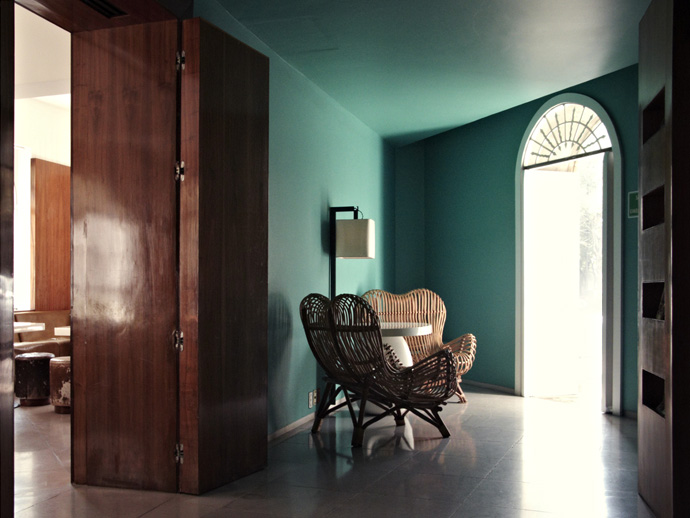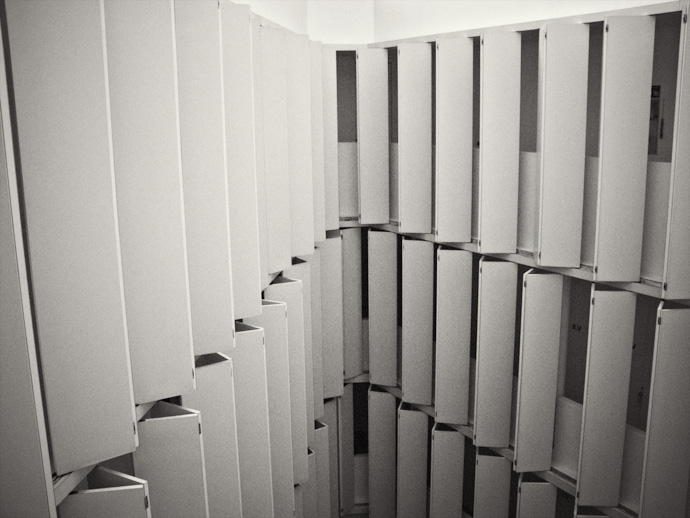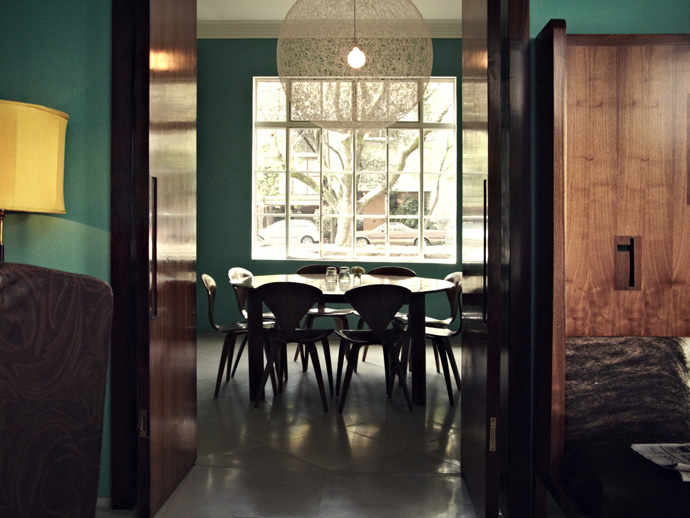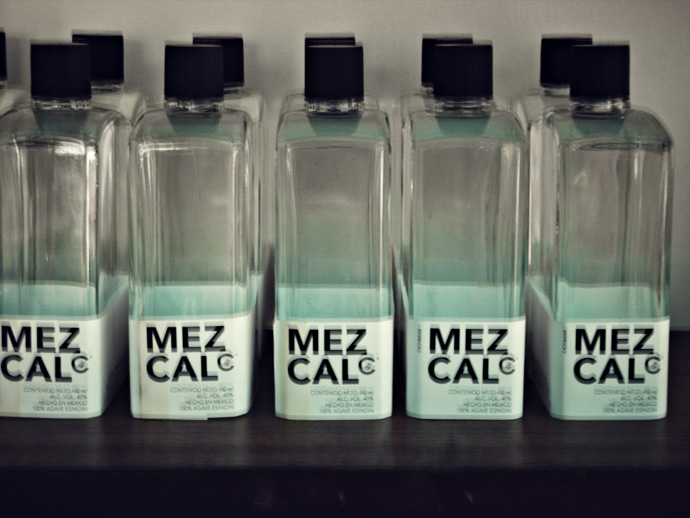-

hyeres express: maurice scheltens & liesbeth abbenes
-“The specialty of Scheltens & Abbenes is to meticulously arrange objects” claims the biography of photography duo Maurice Scheltens & Liesbeth Abbenes. Working since 2002 as a duo, the minimalist compositions they painstakingly compose have earned them attention from clients and editors alike.
As part of the Hyères 2013 Fashion Jury, they answer the questions of the blog partners – Un Nouveau Ideal by Filep Motwary, *Fruitpunch by Sean Santiago, BRRUN by Bruno Capasso, Vogue.de, Malibongwe Tyilo and The Stimuleye, of course.
Liesbeth Abbenes. Photo by René Habermacher.
Filep Motwary: How does a garment get your attention? What are you searching for while on set?
Maurice ScheltensA sensitivity in material and design. Looking at a garment it often tells if the designer understands it’s own work without stopping to early (or to late) in the process. This attitude is connecting in the way we are also trying to stretch our own sensibilities.Sean Santiago: Your work is striking in its simplicity and for its reductive qualities – is fashion more interesting to you in theory more often than in its execution?
We are more interested in what we see then in what we know or should know. After ‘building’ is the moment of truth. Our curiosity by testing an idea for it’s visual qualities is the driving force. That is also why we keep on searching, experimenting and checking during the shoot instead of making photographs from a sketch made on the drawing table. This doesn’t mean that thoughts or drawings as they are can be beautiful and interesting to. It’s a matter of where to put all these aspirations.
Maurice Scheltens by René Habermacher.
Antoine Asseraf: As jury members used to shooting Fashion as objects, can you abstract the mise en scene, the show, the person to judge only the garments ?
Actually we see the same struggle and solutions in the garments as we face while shooting fashion or any other object in front of the lens. Maybe it’s a healthy distance that we have looking at fashion because we’re not ‘over informed’. We’re responding to what we see with the same critical eye as we do in our own work.
Bruno Capasso: How do you work as a duo – do you have 2 distinct visions ?
Our collaboration has been growing over the past ten years. It’s an evolution in which we grow individually towards each other and makes it difficult to say what comes from who. Individual credits would be out of place. See it as a chess game in which one makes a move and the other responds onto it… on and on.
00 -

design parade 7
-When we say “Hyères” we often mean “the fashion and photography festival” organized by the Villa Noailles.
But we shouldn’t.
Because for the last 7 years, there’s been another “Hyères” in Hyères :
Design Parade.10 young design-ers, eye-popping exhibitions dedicated to furniture and industrial design, a special focus on the art brought back by the Noailles’ African expeditions in the 30’s, and already a spin-off event, Tapis Parade (Carpet Parade).
Design Parade 7.
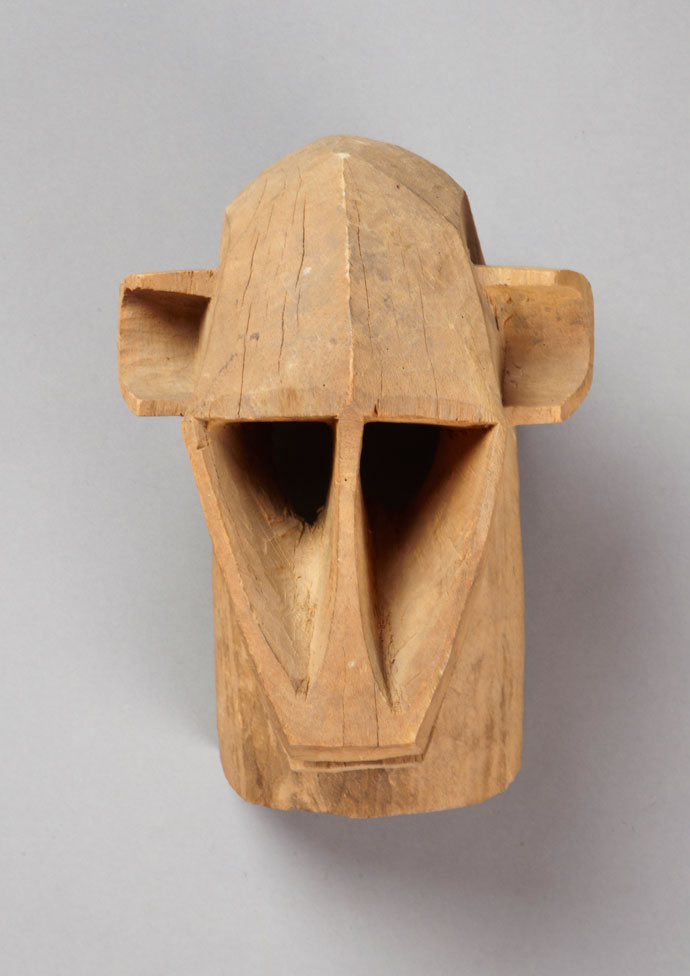 «Dege» Mask, Dogon, collected at Opti, Mali, in 1931, 'bois de tage', Musée du quai Branly.
«Dege» Mask, Dogon, collected at Opti, Mali, in 1931, 'bois de tage', Musée du quai Branly.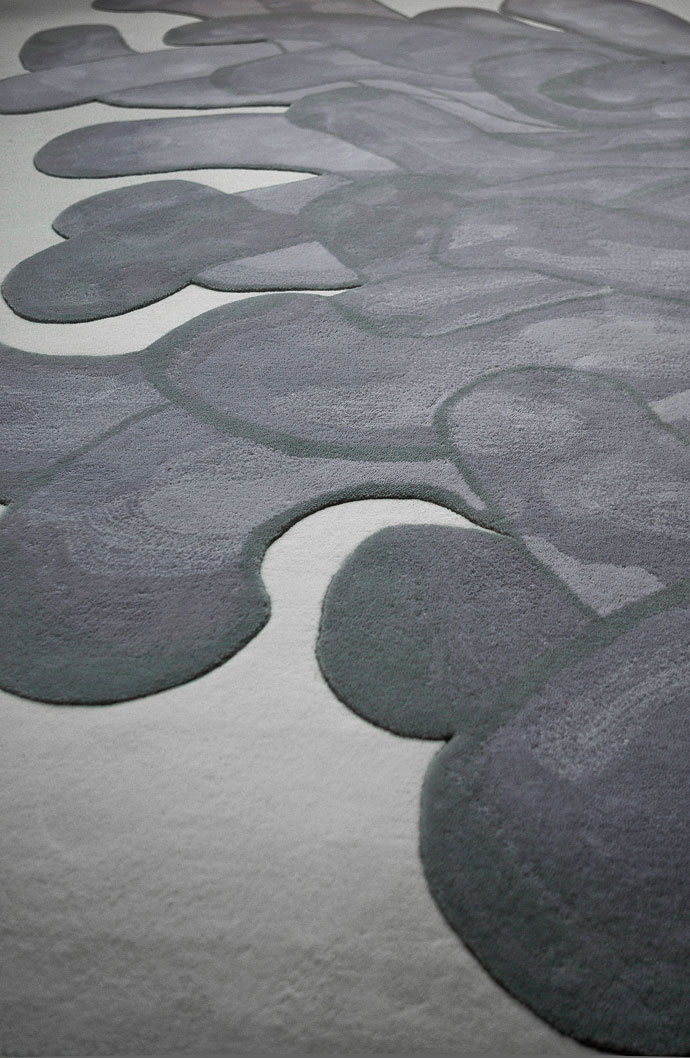 TAPIS PARADE - Anémones Jekyll, François Dumas, La Chance.
TAPIS PARADE - Anémones Jekyll, François Dumas, La Chance.
 Daedaleas, Fanny Dora © Charles Negre, ECAL 2011.
Daedaleas, Fanny Dora © Charles Negre, ECAL 2011.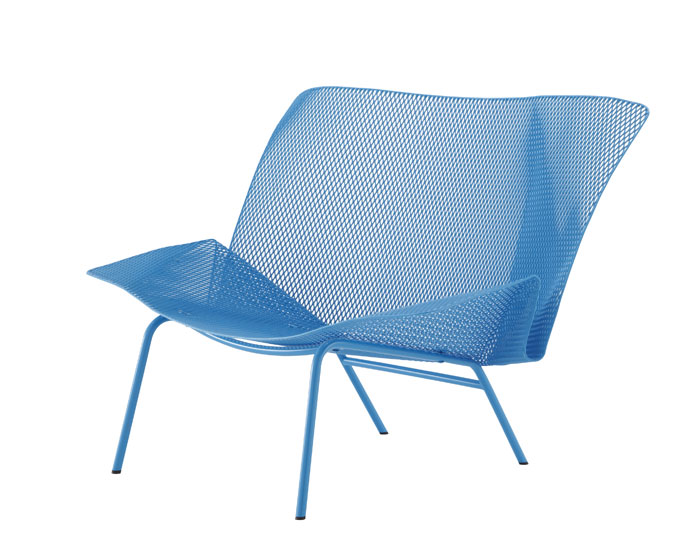 Grillage, fauteuil, François Azambourg, Ligne Roset © Jean-Pierre Lemoine.
Grillage, fauteuil, François Azambourg, Ligne Roset © Jean-Pierre Lemoine.Design Parade 7
Opening Friday June 29th
Until September 30th.
Villa Noailles, Hyères
Var – France. -

Hyères We Go Again
-Ladies and gentlemen, place your bets. Every year, the Villa Noailles art center in Hyères, France offers fashion designers and photographers the opportunity to step into the spotlight…
Photo by 2010 photo winner Yann Gross, look by 2011 fashion winner Léa Peckre.
Design duo Viktor & Rolf ? Stills photographer and Ricard award finalist Erwan Frotin ? Mugler men’s designer Romain Kremer ? Fashion photographer Sølve Sundsbø ? ANDAM 2011 prize winner Anthony Vaccarello ? Lacoste designer Felipe Oliveira Baptista ? All these people have one thing in common – their work was all launched into the spotlight through the Hyères fashion and photography festival, which is now going into its 27th edition.
As a contestant, you must register by November 26th and send your application package by December 5, 2011. Your work will then be reviewed by a jury of fashion, art and photography professionals (including in the past Azzedine Alaia, Nan Goldin, Riccardo Tisci, Peter Knap, Karl Lagerfeld, Viviane Sassen, Dries Van Noten, Tim Walker, Christian Lacroix…).
If you make it past the first rounds of selection, you’ll be given production help for your collection, flown to the Hyères, given the chance to meet and talk with the 2012 juries, and have the famous Hyères team produce a gallery show of your pictures or a fashion show of your collection, in or around the unique setting of the avant-garde Villa Noailles, once vacation home to the likes of Dali and Cocteau…
And of course, the best part: my little finger tells me this year there will be even more prizes…
In case that wasn’t enough, here’s everything you need to know about Hyères in 2 minutes 6 seconds.
Villa Noailles
2012 Contest guidelines & registration
Registration deadline: November 26th, 2011
Submission deadline: December 5th, 2011 -

MARIOS SCHWAB
-MARIOS SCHWAB TALKS TO FILEP MOTWARY
PHOTOGRAPHS BY RENE HABERMACHER
Marios Schwab is known for his unique interpretations of natural forms and his ability to dress the female body in a way that he only knows.
While the world of fashion turns its attention to ephemeral trends, we decide to interview Marios and hear him analyze the Schwab philosophy, his position at Halston and the analysis of his very first Resort Collection, one day before its revealed to the public and press.
His collections are based around reflecting the inner structure of a garment on the outside, a theory that helped to define him as one of London’s most exciting designers – a position he continues to hold.
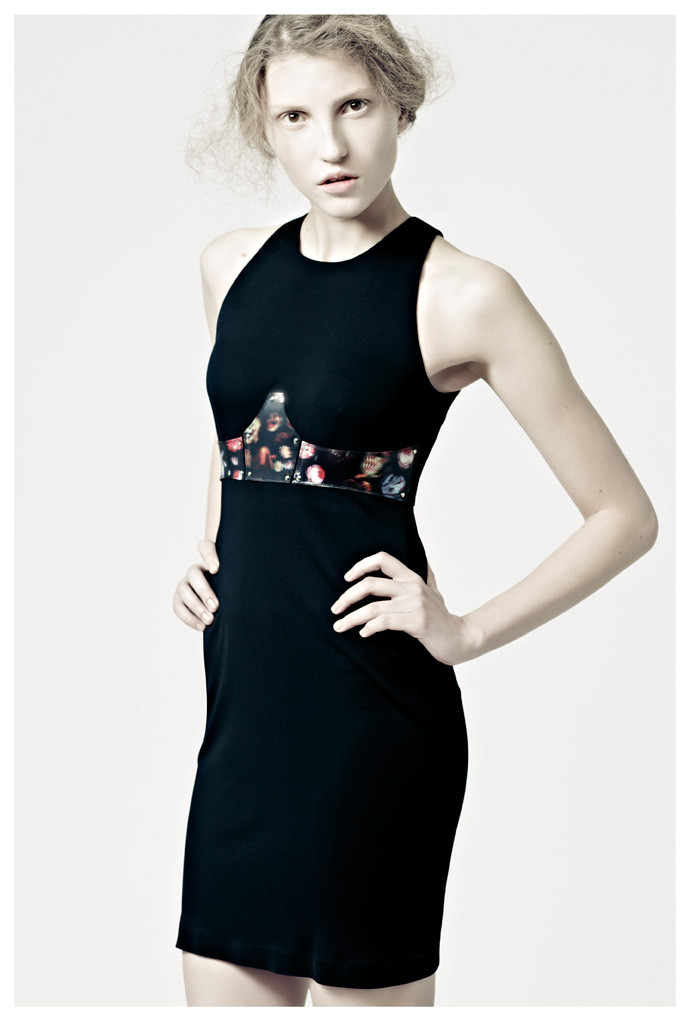 Marios Schwab resort collection 2012. Photography by René Habermacher
Marios Schwab resort collection 2012. Photography by René HabermacherA distinction and Best Student Award graduate of Esmod, Marios moved to London in 2003, where he completed an MA in Womenswear Fashion at Central Saint Martins, studying under the guidance of the formidable Louise Wilson.
Two years later 2005 saw him launch his own label, showing for two seasons with Fashion East before making his on schedule debut at London Fashion Week for SS 2007
Since the Spring of 2009, he was appointed as the creative director of HALSTON in New York.
Schwab’s designs are sold all over the world, in shops ranging from Dover Street Market, Harvey Nichols and Browns in London, to Maria Luisa in Paris and Barneys in New York.
Photographer Rene Habermacher met with him in London for the creation of the pre-collection’s look book
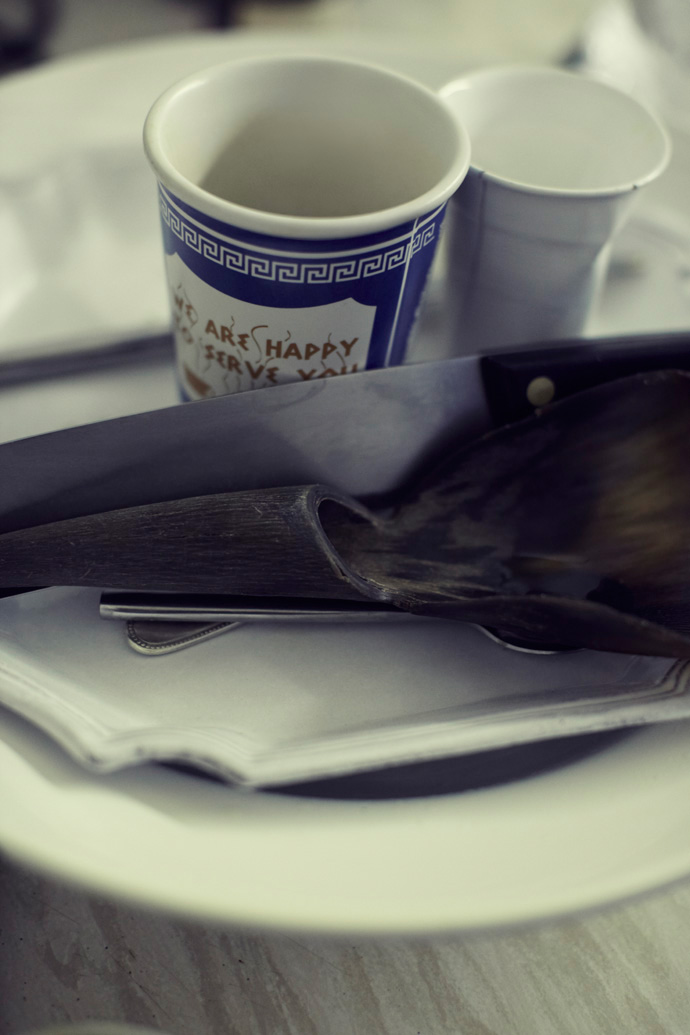
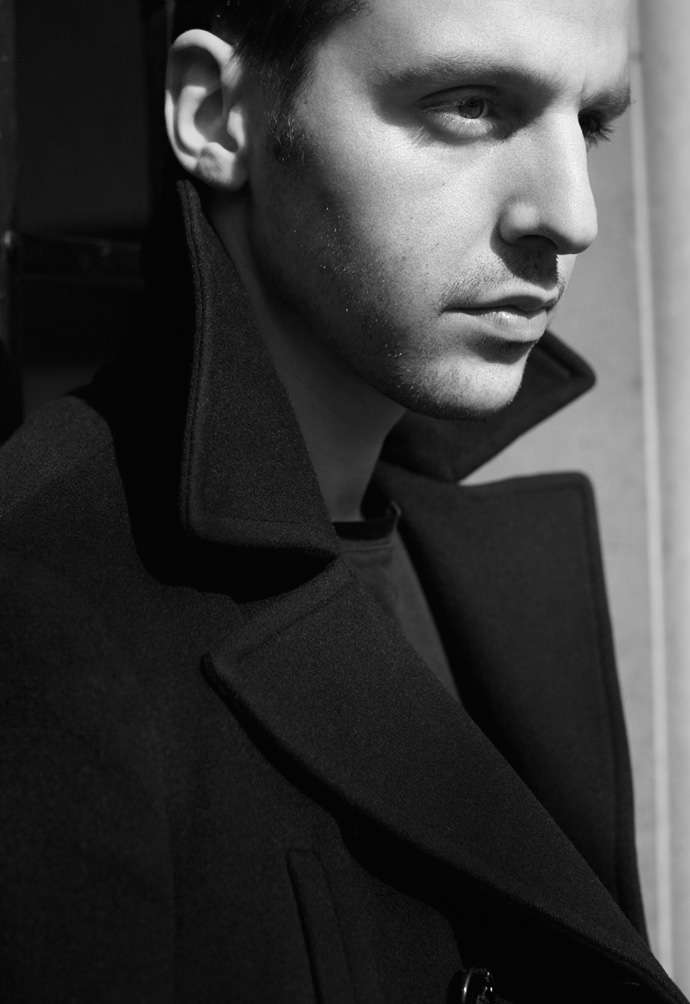 Marios Schwab and his Greek coffee set at his studio. Photography by René Habermacher
Marios Schwab and his Greek coffee set at his studio. Photography by René HabermacherHow are you today Marios, what have you been up-to since this morning?
Pretty much like I came from Paris and immediately started working on the main line…It’s a non-stop situation right now because I just did my first resort collection which was in a way an experiment in terms of getting in right with timings and deadlines, a completely new experience for me. Also we are producing this collection elsewhere outside the UK.
You just photographed your first pre-colection for Summer 2012 yesterday with Rene Habermacher?
We started shooting on Friday; he came over to London and shot the collection in my Studio.
What is your pre-collection about?
I went to Vienna for a weekend where I visited Kunsthalle and saw these amazing series of Vanitas paintings from Dutch painters. For me they always have this feeling of seduction and mysticism that I really like and the hide-reveal again which I am so obsessed about. I wanted to create a print that kind of works color but still within a black background…
It all started with creating the print with artist Tom Galland, who is a friend living near by and with whom we work on numerous collections together. The outlines pretty much echo shapes that have a classic sort of detailing from Maris Schwab, torn down so it becomes easy to wear and accessible for the younger girl that wants to buy, but not necessarily can afford. It’s about clothes for someone who doesn’t want to wear something that is too tailored.
How did you decide to add a pre-collection in your work? Was it after popular demand? What it the aim of a pre-collection anyway?
Yes first comes the “demand” as you said because the main line concentrates on tailored pieces, cocktail pieces mainly, and has the element of fabrics that are more sculpted. There was an easy-wear-feeling missing. You know, easy things that make more sense in a resort collection rather in a mainline. Fabrics like jersey, which is great to wear, in a good quality and good price. Its something that was requested from the top floor but also the feeling of having to return back to something that is a little bit younger was very very important to me.
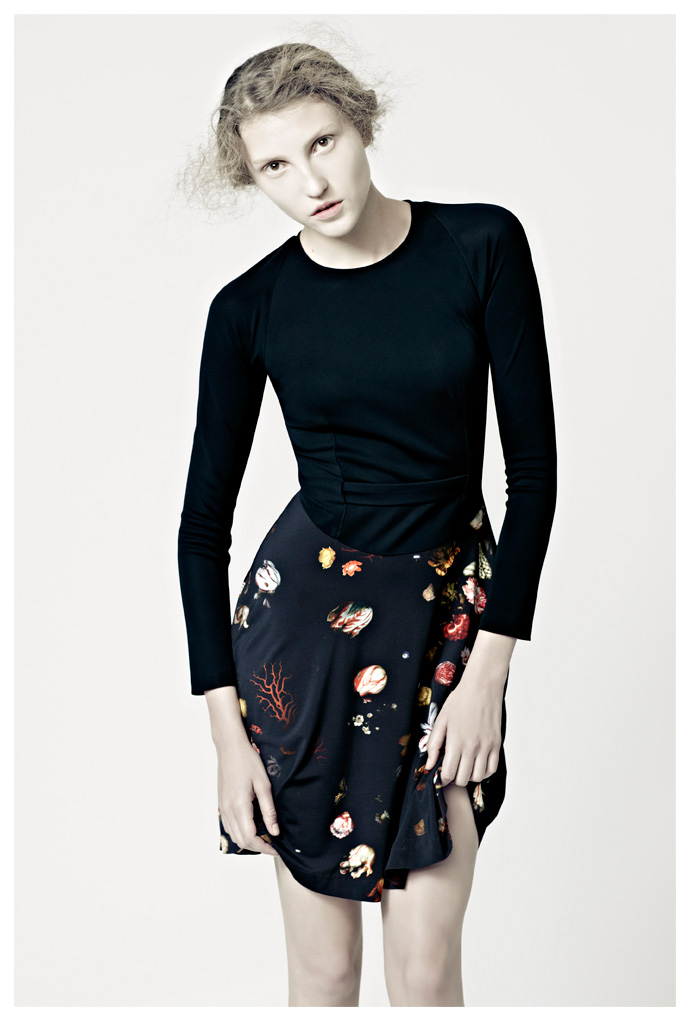
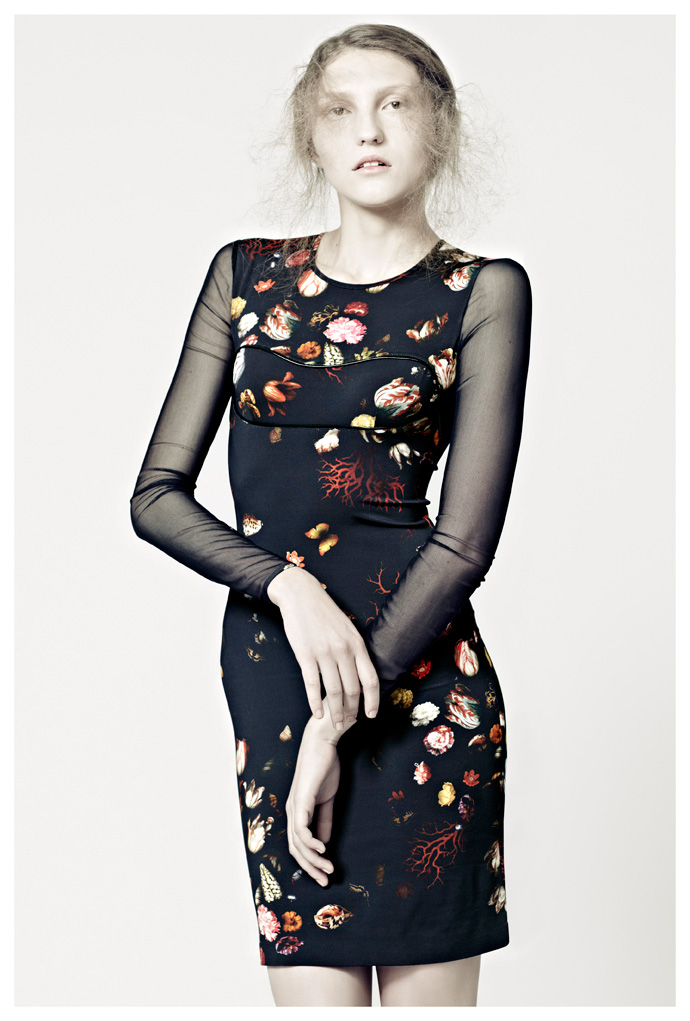 Marios Schwab resort collection 2012. Photography by René Habermacher
Marios Schwab resort collection 2012. Photography by René HabermacherHow is this collection pricewise?
Well it starts from 200 GBP and reaches s 750 GBP. That was the main point, to put very interesting detailing from the DNA of Marios Schwab-keeping the outline and fit on a friendly price. It is quite an interesting thing to do I guess because when you start a collection with this thought pros-mind-set becomes automatically an interesting project. I was concentrating on dresses that you can put on daytime and also in a club or to go travelling with and I think this is something I would like to concentrate on at this point and turn it as the signature of the resort
Marios, it often seems that you manifest an idea way ahead of its time, even two seasons before others pick your ideas later. How do you work, develop these ideas and where you withdraw your inspirations?
Well it’s a lengthen process because I always like to bring in the surroundings of my own life, or what I hear in any sense politics, stories, everyday life, as its an emotional story developed into garments. I don’t know how to explain it really. It usually starts with materials and then it develops into proportion and sectioning of the body in a certain way.
Last season how it started for example, was after a documentary I watched about ancient Greece and the oracle temples. There was this amazing building- I don’t remember where it is now-but it was saying that “nothing in excess.” And it kinda gave me the idea that basically its very much about what we are right now: overloaded with information but also we want so much out of everyday life, some can afford it, some cannot. For me, the process of it was to take this theme and create something that is beautiful with craftsmanship.
So I started reading essays about craftsmanship, then I came across the work of Adolf Loos, an architect from Austria who worked on finding the meaning of decoration and its meaning in society.
To cut the story short the collection was based on minimized craftsmanship and how it becomes an over precious part of each garment. So really framing the details on specific parts of the body that becomes precious at the same time.
I like to place things where they don’t belong from time to time. Broking was one element but also the status of symbols like a pearl necklace and how it can be re-translated in a modern way. Within this season, the Vanitas paintings for me meant life, beauty but at the same time possessions and darkness. It’s so beautiful and it reminded me of Victorian wallpapers, bursts of flowers with a dark background. All these harmless detailing in the collection like elastics that wrap around the body and create the draping reminded me of my earlier works since Spring Summer is very much about the inside outside, how you can retranslate draping without looking like a retro reference, you add a utilitarian element to it but then it’s a little bit more modern.
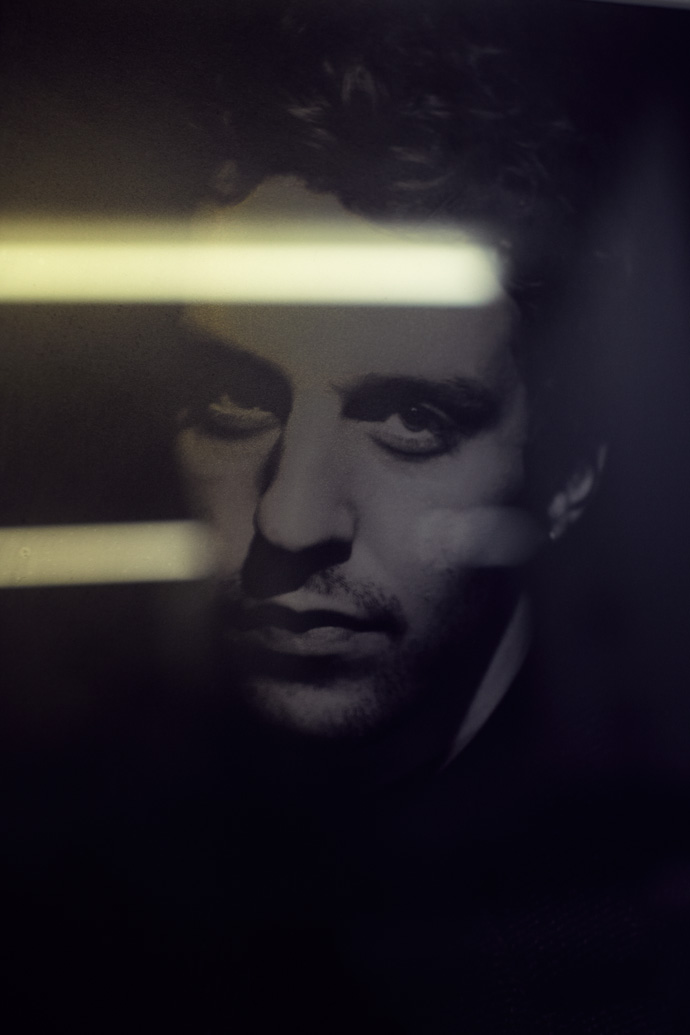
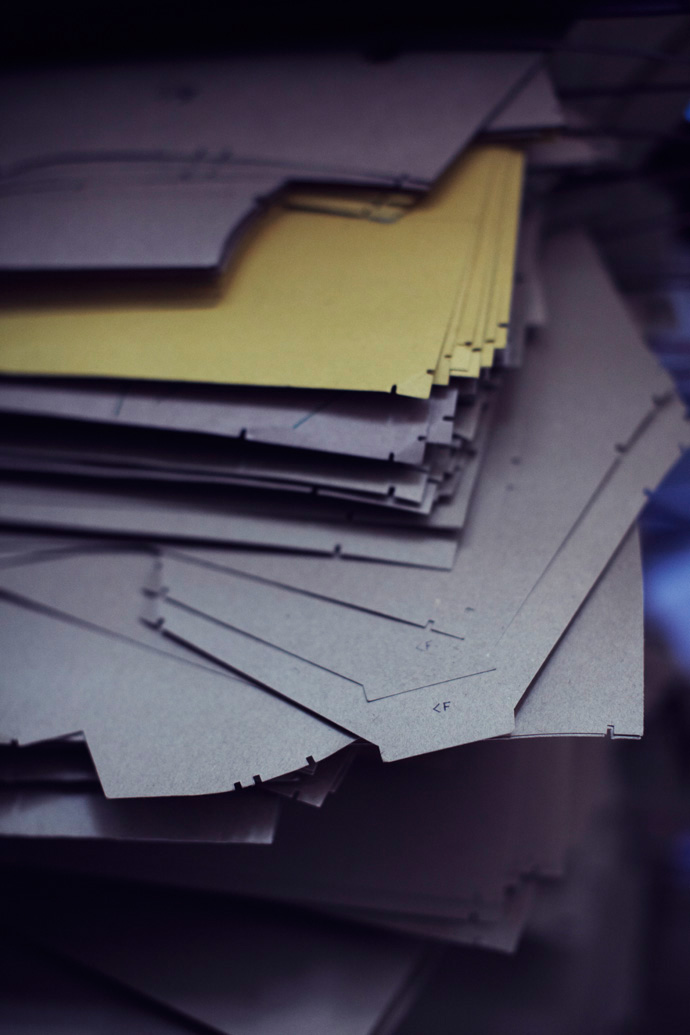 Vintage print of Marios portrait by Paolo Roversi, and Patterns at the studio. Photography by René Habermacher
Vintage print of Marios portrait by Paolo Roversi, and Patterns at the studio. Photography by René HabermacherIn the last five minutes you used the word “craftsmanship” for more than five times. How important is craftsmanship in your work?
It’s the most important thing for me. The way I learned the trade was going to Austria at the age of 15, surrounded by manic women, teachers that knew everything about traditional techniques, probably not very used these days unless of course you work for a couture house. It became my obsession and also something I am very much fond of. I like the humbleness of a craftsman and the sound of craft. I feel so comfortable sitting next to a person that is s specialized and so focused into his work. There is certain romanticism in it that I always go back to. I like sitting in a studio surrounded by the fabrics I just got from the manufacturer and then turn them upside down doing things I didn’t even suspect. I get a kick out of it, not to buy something that is finished but apply something to it.
I guess that can be said about women or the girls that inspire me. It’s a woman with personality- I don’t like women with no character. I don’t see a woman only as a body to dress. I see her as a strong persona that has a little bit more that just attitude. For me, women should be running the world at this point.
I like women who are intellectuals and private at the same time …I make a subtle story each time for them that does not overload their personality, enhances their personality.
While having a closer look at your past collections, I noticed that you continue to focus on the women’s body structure, emphasising on the waist and shoulders. Though now, your work has become more confident and much more strict than before…Do you agree, how do you see your work through the years?
Basically the starting point of a collection is always a naked body –in that I draw around the bodylines that are very much continued over the years I have been working. Whenever I dress a body I like to reveal what I also hide under a garment. From an architectural and proportional point of view it’s the most interesting part for me. What you cover you can reveal in a very sophisticated way on the surface of the fabric but also the cut.
There was certain toughness in your winter 2011-2012 collection with the use of leather and all…
The winter collection indeed had a feeling of toughness and that’s a classic element I guess in Marios Schwab that contains this femininity within something that is the good girl and the bad girl together. There is the prettiness and a sexual element within something that is sometimes quite strong and tuff. And I like to mix leather in a sense that you take the lady completely away from clothes. I don’t like ladies. I like to have a non-pretentious woman and I think that when you look closely to the garments you can see that they are not pretentious and that’s very much about the aspect of Schwab. My dresses need to be appreciated close by and I like that they don’t scream aloud but at the same time with a closer look you learn to appreciate them, their line and the detailing.
Taking elements that are very lady like and gentlemanly, for instance the broking and the pro necklaces kind of annoy me when I see them on women cause they are just too preppy.
I use them in a way that they become almost irrelevant of their status, hidden behind seams or they grow out of a seam either the are attached in a different way and become a utility, not just decoration. This is something I like doing also, using decoration at the same time in a functional way.
Remember the metal piece from an earlier collection of mine? The point wasn’t to create something shiny with a reflection in order to simply impress the guests of the show.
I thought of it as a garment that gives you this extra support when you dress up and feel you are wearing “something”. Psychologically, in some dresses this is missing, also in fashion these days. People used to take time to prepare themselves, so I tried to modernize this vintage routine within this shiny dress.
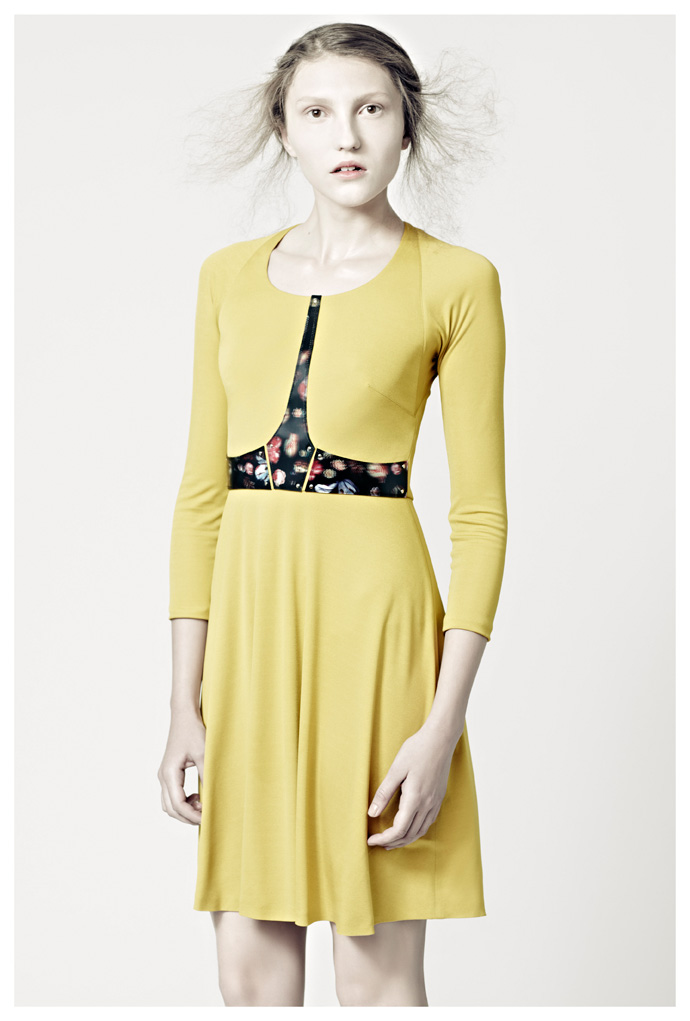
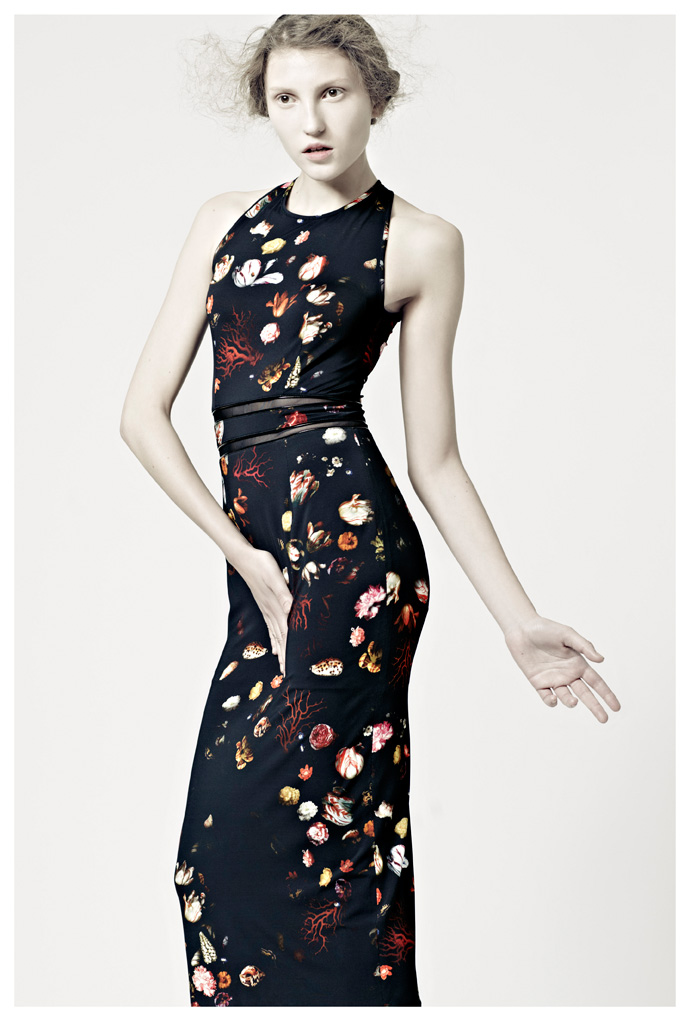 Marios Schwab resort collection 2012. Photography by René Habermacher
Marios Schwab resort collection 2012. Photography by René HabermacherHow has your involvement with Halston help your own brand you think?
I think it is such an interesting thing to work for another brand, with another team, travelling in a different country to produce a collection, which proved to be such a precious part of my Halston commitment. Basically you have a team that works abroad, that you are not very close to most of the time, you have different deadlines than your own. All these made me feel much more strong. You know also since I am the only designer there, I don’t have a team that designs alongside me which is exactly the opposite from what happens at Marios Schwab. It surprised me quite a lot. I always thought that it was going to be hardcore, working for two brands at the same time. It is hard but not as difficult I had in mind it would be.
Crazy in what sense?
Meaning the sense of “switching off”. I was surprised on how I could switch off from my collection, going to Halston do something else and then back again and back again… I felt a little bit scared before taking the job. It’s indeed a huge responsibility but you learn to do it, that’s it. Its pretty much like “you have to get on with it”!
What made Halston such a rarity as a House?
Halston as you know was concentrating on enduring fashion and I’d love to see Marios Schwab doing that,..
Halston encloses a story behind it that you can always see something else if you try looking closer. At his time Halston was creating, he offered something that was a very subtle, a minimal way of looking glamorous by wearing something simple and yet looking beautiful and seductive and expensive and clean. He had a very modern way of making clothes. The principle probably is the attractive one, what it was all about. But it was also attached to Studio 54, a very special place of that era and it was in everyone’s expectations. People just love it and for them Halston is attached to Studio 54.
Do you think your customers understand you better than your critics? Also how do you respond to bad criticism?
I don’t read reviews anymore because it just confuses me. After a show you are very tired and very emotional and personally the last thing I want to do is read criticism, good or bad. One critic can lift you up or drag you down which sometimes its not very relevant to a person that works in a very personal way and in private. I go meet people, the consumer, and the woman who wear what I create. You want to hear both at the same time, it normal but when you are still conquered by the after show adrenaline, you can’t just bother with that.
You belong in the Kane, Katrantzou, Pugh and Pilotto generation. It’s somehow like the “Antwerp’s Six” story. What in your opinion, all of you offered in fashion that was missing at the point you appeared?
I think quality, good fit within something that is very special and still acceptable and wearable. London at the time was about things that were more phantasmagorical..
So you are saying that you guys made the difference?
I’m not speaking about the rest, but yes I think that was what was missing at the time without pointing out someone specific.
Let me do that (laughs) all you have to do is agree or disagree (laughs). You all came at a point where as you said everything was very phantasmagoria and finally we had some wearable clothes coming from London, which was not the case before.
Yes, London started having a good balance. More than anything, the overall look was a little bit overwhelming. But I have to say that London is very special on that and supports all kinds of new developments, new ideas in fashion. It has to be said; you can’t really find that anywhere else’s in the world. Many people wonder, “What’s this thing about London, anyway?” But its true, London within this experimental nonsense or sometimes good sense it creates certain movements and in a way creates the platform for all of us to stand onto tomorrow..
What would be a designer’s weakness you think? What’s your weakness in that case?
Deadlines (laughs), free time. I can never organize myself to have a life. In this business you become very critical about what you do. It’s the mentality of living in your own bubble, creating for somebody else can be quite intimidating at some times, for others as well..
How difficult is for a designer to cross lots of different ages in one collection?
It’s a matter of confidence of the client. If you see a curvaceous person that wears a skin-tight garment, regardless of her age, whether she is a young girl or a woman and she has the confidence and attitude that matches the whole personality and appeal its instantly a success. This equals that the designer must have done something right.
Would you tell a client if she doesn’t look good in your dress?
Yes if she would ask me I would definitely tell her my opinion. If she didn’t, then why I would I tell her if she is happy with it? It’s her choice and one needs to respect that.
How do you see the present of Fashion?
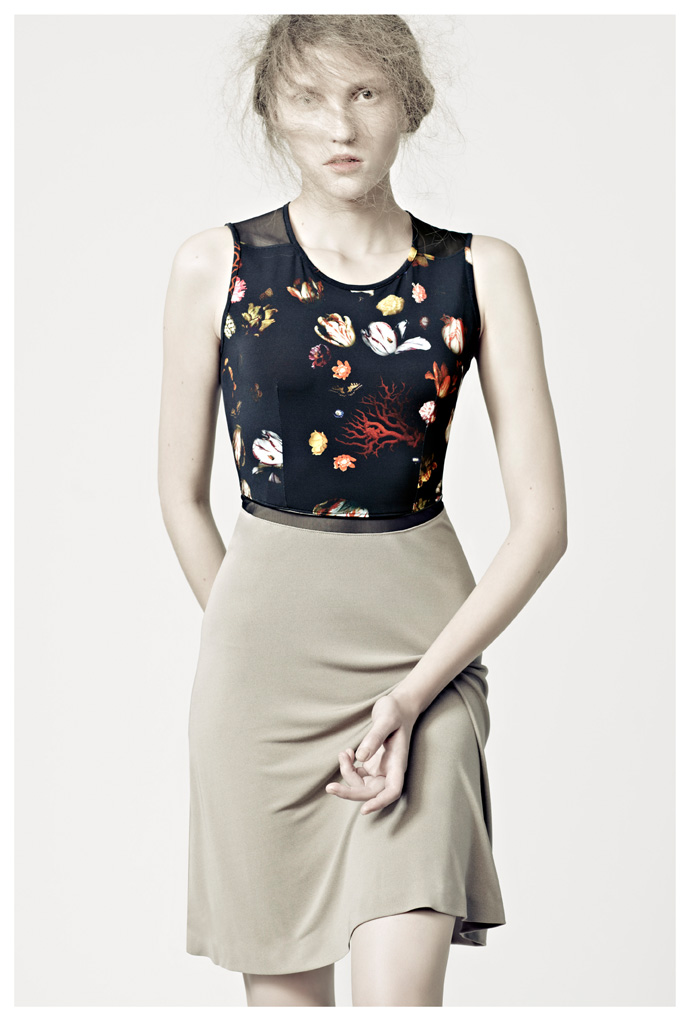
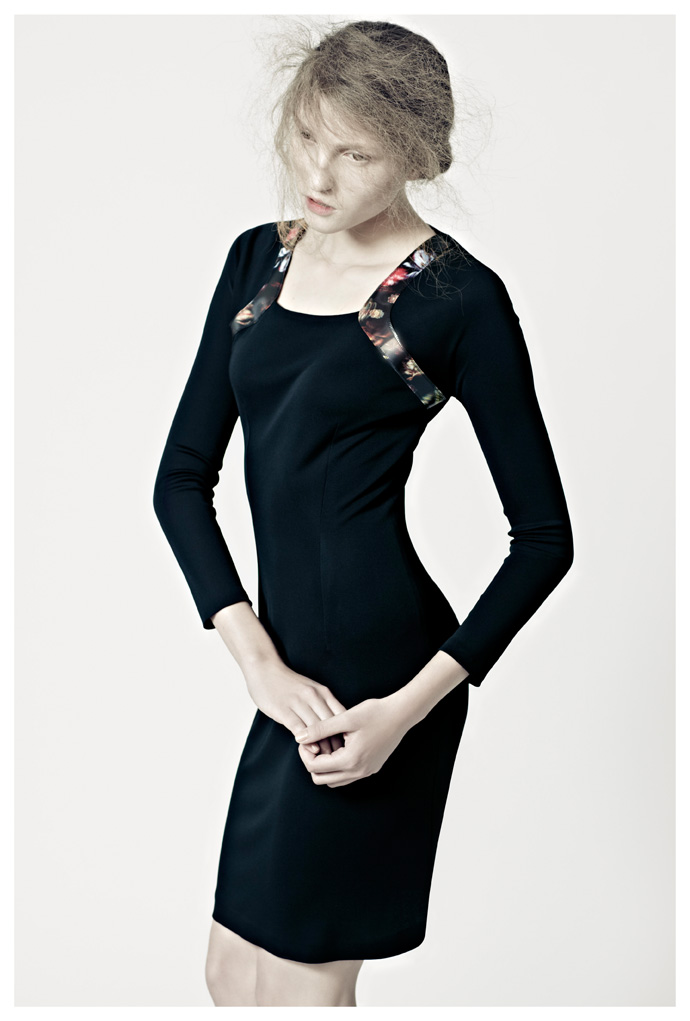 Marios Schwab resort collection 2012. Photography by René Habermacher
Marios Schwab resort collection 2012. Photography by René HabermacherShall we move to the next question? (Laughs). It’s interesting because it’s changing and its not changing at all. I think what changed is the way we get informed, how we advertise, and talk about things, how we buy things.
Everybody has a question mark about what they are doing these days…
The non-interesting part of this global change is throughout this financial downhill, the how quickly we gain information around us can make things very boring and very …
Things are supposed to be fast in fashion and although it seems that way, there is no new development in music and so many other creative sectors; and that is a shame because people stopped thinking unnaturally and they want to get into so many different characters since there are surrounded by so much information and don’t know how to handle it. They don’t have the time to study the new, see it from a distance, observe it, analyse it. It’s not a concrete period, there’s no certain opinion about things. You want to dive into so many different things because you have no other option.
It takes one bad collection to take a designer out of the spotlight you think?
I don’t know how it is but I wouldn’t see it that way I don’t know. You can have a bad collection because you decided to go on extended holydays and have a bit of a life.
Its interesting to mention that fashion can be such a fluff in the air. People think Balenciaga is amazing and next season they think Givenchy is the most interesting thing…sometimes it can become a little…I don’t know how to explain.. Do people have an opinion at the end? In previous decades or centuries this wasn’t much the case. Things were very specific. I’m talking about how people dressed, the way people reacted on fashion, art, their opinion…It was about dressing up your own way, to look pretty your own way and the way they looked upon things. Its not about buying the total look its about buying items from a collection in order to combine them with what you already have and make your look your own.

 Marios at his favorite afternoon stroll and part of his butterfly collection. Photography by René Habermacher
Marios at his favorite afternoon stroll and part of his butterfly collection. Photography by René HabermacherYou own your own company—nobody owns you. How’s that for a responsibility considering the reality of the fashion houses today?
I don’t think it’s necessarily a bad thing, no. The point is that our times as it is, its quite difficult to increase your team members, the structure, to tap into things you always dreamed of, like the way you want your company to spread out…
It’s not easy to do it by yourself without investment, or being helped by another source. It would be a shame to only be able to create clothes and not a whole product, that doesn’t only concentrate on fashion, not being able to communicate it right. Sometimes you don’t have the time or the money or both. But help must be welcomed.
I am curious to know, how many people work for you?
Hold on I need to count…Five full timers, mainly administrative and office work. I have one assistant that concentrates on fabrics and the boards.
Do you give chances to interns?
YES!! Yes!! Interns are so important, I like teamwork and when I refer to the team as always say “we”. It’s confusing for people. Who’s “we”?
I see myself as a craftsman, as I said before, I like to work within like a team that creates something that needs to be educated to us , to find our how its done and how its made and it takes a team of people that are special and committed to do that .
You can drive people crazy when you just give directions and not get involved in the making with them. For us especially, as we make all the samples in-house and it can get a little crazy. Students and the team that is here for years working with me seems like a family, we get emotional and fun and relaxed at the same time.
What I want from a student is to learn something special while running around in all the sections of the company, doing things, the boring jobs even,.. They need to have a complete idea on what it takes to be a designer because their time will come to open their own business.
Fashion is not a fantasy nor a party…
Do you ever let yourself go? Is there anything in your personality that you really have to keep a tight grip on?
The most important thing for me is family. They are part of what I do. My dad and mother enabled me to leave home at 15 to do what I wanted to do, feel free. They are critical about my work, which is very very important for me. Sometimes my mom doesn’t like certain things as she is a woman with style and she was the first who gave me the inside of quality and aesthetics.
In my private life I collect images I find beautiful. I like a variety of things, I love the impactful emotion when I sit on a beach somewhere in Greece, or sitting with old women on an island’s quiet little street, hearing them talk …Easy things and simple like that…
I like creating through emotion and experiences, history, the women I met n my life, their attitude, character. It can be very cinematographic. I build up a whole fictional character, created from my acquaintances with different women throughout my life.
What was the last thing that Stimulated you?
…my boyfriend..
-

1136 postcards and a smoking nun…
-One family. One postcard for every day apart. The Butlers’ uncommon journey is told by the postcards from a mother to her daughter.
Collaborating with Dutch designer Irma Boom, Jennifer Butler has published an innovative book: JAMES JENNIFER GEORGINA, a taxi yellow, 1200 pages volume in limited editions of 999 copies, parted in three sections with a joint spine, telling a unique story through 1136 postcards and 20 dialogues.
Jennifer travelled the world with her husband James, in an effort to dry him out from his alcoholism, while their daughter Georgina stayed at home with various nannies, but Jennifer sent her daughter 1 postcard per day away – 1136 postcards written from 1989 to 1999.
205 flights taken, 268,162 miles driven, 2 bullfights.
A speeding ticket.
53 unpaid parking tickets.
13 cancelled flights, 1 bomb scare, and 205 churches visited, politics, wars, rising prices, births, funerals, holidays…
Yet what comes forward above all is their relationship.
 JAMES, JENNIFER, GEORGINA by Jennifer Butler. The 3 spine design allows to lay the book flat
JAMES, JENNIFER, GEORGINA by Jennifer Butler. The 3 spine design allows to lay the book flatWe meet at the American Library in Paris, 23 years after the odyssey started.
As they arrive, Jennifer, a former model, on her side her very British gentleman James, holds a copy of the book in her hands, spiked with post-its of matching yellow. She is in full swing, mentioning another book by Allen Fletcher: “Be aware of wet paint,” he wrote in his beautiful handwriting: ‘I don’t know where I am going, but I am on my way’ and it really sums me up: I don’t know ever where I am going, but I have a sense that I am gonna get there!”.
It was in fact Allen Fletcher’s work, and particularly “The Art of Looking Sideways” that made her look differently at the value of the hundreds of postcards she had kept in boxes after 10 years on the road. When in 1999 the drinking of James stopped, so did the postcards. In 2007, Allen Fletcher was only a few months more to live, so he recommended to Jennifer to work on her project with Dutch designer Irma Boom.
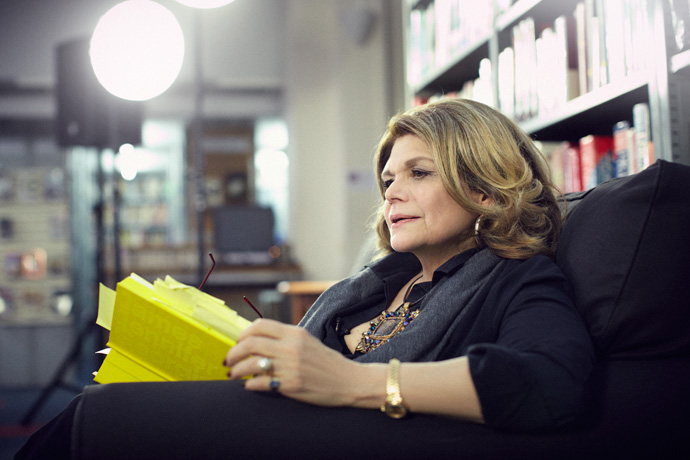 Jennifer Butler at the American Library Paris
Jennifer Butler at the American Library ParisBehind the book, says Butler, lies a passion “for extending the boundaries of what a book can be. And the knowledge that books have to be more, different than ‘information.’ More than being able to download them from the internet” she says. According to her, ‘the book’ is not in the ‘up’ – it’s in the ‘down’:
“The book remains to spread something else: maybe sheer beauty or a much slower, more thought-provoking message” Jennifer expresses in her first correspondence with Irma Boom, sharing the designer’s standpoint on book-making today.
Despite the highly sophisticated and calculated design, JAMES JENNIFER GEORGINA is an emotional matter: “The book is an extension of the content. Irma would not have designed that way for a book about tennis players, or about architecture, whatever. This book is married to the silk screen yellow that she chose, and the yellow canvas. The book is yellow because its full of light and success! […]”
“My husband, Georgina’s father, was drinking himself to death. And with one failed marriage behind me I fought to stave off a second.” James was given only two more years to live, so “to save us I took the difficult decision to leave Georgina at home. We travelled to dry James out and we travelled to shield her from the indignities of drink. Everyday we were apart I wrote to Georgina. If love waits upon a gesture, then my gesture was these postcards. I wanted her to know just who I was and just what I did. They’re a testament to a mother’s love and a sharing of advice, anecdotes, front page news and exotic places” she explains.
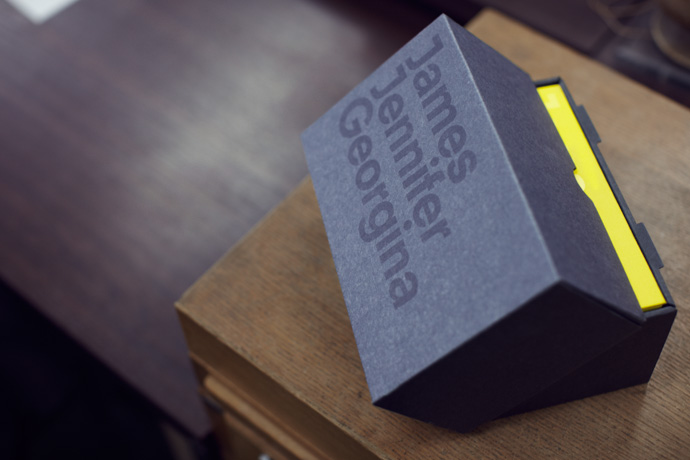 Cassette with the Book of 1200 pages, sewn in yellow cloth
Cassette with the Book of 1200 pages, sewn in yellow cloth“The post cards were never written for public consumption. They were written because I loved doing them.
And I did miss Georgina. And I did feel guilty and it was a way, felt like mothering from a distance.”
For Jennifer, it is actually a very traditional story: “there is a situation, a lot of descriptions with the postcards of a story, there is drama and there are 3 characters. They’re just divided in a very innovative way, because the description and the situation is part 1, the drama is part 2, and the characters are in an album in part 3. Usually when you read about a family or a story or a novel it’s all in one. […] ” She continues, “when people hear the word alcoholism – you know its like a dirty word or somebody survived it. The alcoholism really gave the book its Alfred Hitchcock time element.”
Jennifer admits that there was certainly a bit of irresponsibility concerning the traveling, looking back on it:
“The structure was: let’s go. Like Thelma and Louise. And I was so excited having James sober and clean shaven! He was adorable and generous and he is so knowledgeable about Europe, its history and its wars. It was like being back in university when we were driving! And there was no drink. Because he was so excited being on the road. So it really was not just about keeping him sober. He was sober and I loved the way he was.”
 Postcard from Granada, February 10, 1996
Postcard from Granada, February 10, 1996The book is framing this story of longing guilt and salvation for a wider audience in a fresh way. Despite the 210 postcards that are printed full bore in the volume, accompanied by 400 in miniature, most remarkably, the book also features a series of conversations between James, Georgina and Jennifer: “One guideline that Georgina said, and James backed her 100% up was: there would be no editing! […] “
Irma Boom, according to Jennifer, had approached the book with an enormous integrity and much love for its protagonists had insisted “that we pose the question to Georgina in one of the conversations: what was the sacrifice made by not being there. I said: ‘oh, isn’t this fantastic, Georgina spends every night looking at them.’ My mother said: ‘this is disgusting! my granddaughter is alone a third of her life!’ – of course the people who love you tell you the biggest truths.”
“It was never ever difficult [to talk about our issues as a family]. We’re all very strong characters and I think the love is so loyal that nobody worried about sacrificing love. It was never difficult to talk about the painful subjects: most of all it’s a love story.”
< (more…)
-

Fabien Blachier: Textile Design, Fashion’s Hidden Beat
-The hidden beat behind a fashion collection is often set by textile design. Less in the lime light than fashion designers, textile designers are the often forgotten storytellers. Artists behind the cut.
I recently sat down with one such artist, Fabien Blachier, who has developed a culture of textile prints in Shanghai Tang, a fashion house formerly known for a single style of qi pao.
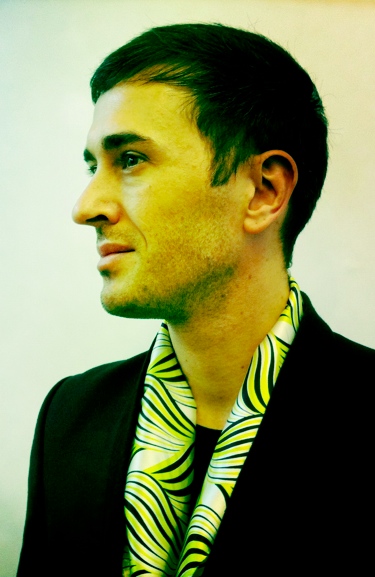 Fabien Blachier by Thuy Tien Crampton.
Fabien Blachier by Thuy Tien Crampton.Laying foundations for a collection, textile designers aim to build a platform that will inspire fellow designers of clothes, furniture to accessories.
Few fashion houses have invested in in-house textile designers. Those that have – Kenzo, Etro, Marni, Dries Van Noten and Shanghai Tang – use textile prints as part of their DNA.
At Shanghai Tang, Fabien uses textiles to put classic Chinese shapes in a new light.
“As a Chinese luxury brand targeting a global audience, we constantly seek to balance modernity and tradition, East and West,” Fabien said. “Above all, we don’t want to create cliché-style Chinese costumes.”
Inspired by the film “In The Mood For Love,” Fabien recently created a collection that was very graphic and bi-color. Not very Chinese.
“In 1960s Hong Kong, the Chinese imported Western fabric for their qi pao,” Fabien said. “I wanted to give a flavor for the era.”
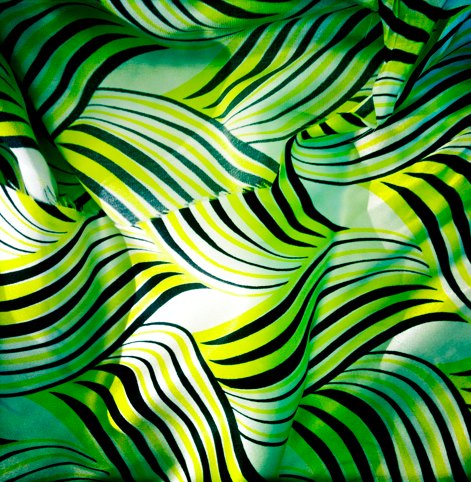 Shanghai Tang textile print: SS 2010/2011. Inspired by "In The Mood For Love".
Shanghai Tang textile print: SS 2010/2011. Inspired by "In The Mood For Love".Sadly, even the most beautiful prints can get lost in the hands of a bad fashion designer. Designers are more at ease employing color, Fabien said, but few appreciate or understand how to work with textile prints.
“I have experienced disappointment quite a few times through misuse of beautiful fabric,” Fabien said. “Fashion designers need to know how to break a print, mistreat it, place it, give it shape.”
“Ideally, textile and fashion designers should work together to balance pattern and form,” Fabien said.
“Dries Van Noten, Marni, Etro, Hermes are among the few fashion houses where patterns are revered and mastered. They know how to contrast small and larger patterns, embrace opulence, use colors, and build up texture,” Fabien added.
For this year’s Spring-Summer collection, Fabien focused on the Miao hilltribe for inspiration. An ethnic group scattered along China’s mountainous border with Southeast Asia, the Miao (also known as the Meo or Hmong) wear indigo outfits with intricately sewn embroidery.
“The Miao theme has never been developed by designers, but they are rich with creativity and art, ranging from jewelry to original patterns,” Fabien said.
Throughout the collection Fabien used butterflies, a Miao symbol of beauty. An additional benefit is that Miao outfits are often square-shaped, which highlights print patterns.
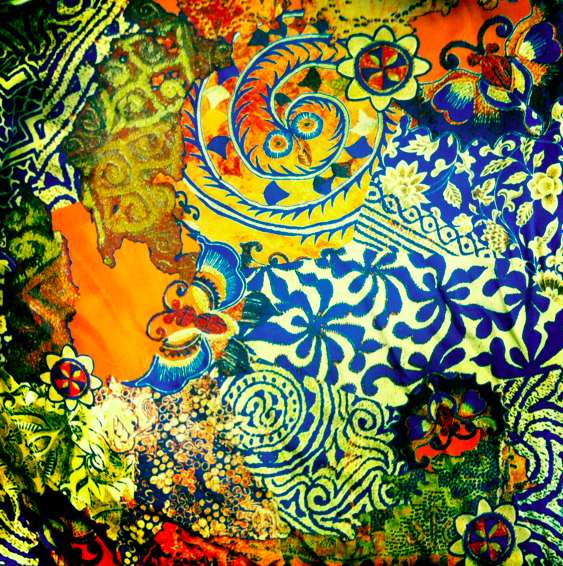 Shanghai Tang textile print: SS 2011/2012. Inspired by Miao hilltribe.
Shanghai Tang textile print: SS 2011/2012. Inspired by Miao hilltribe.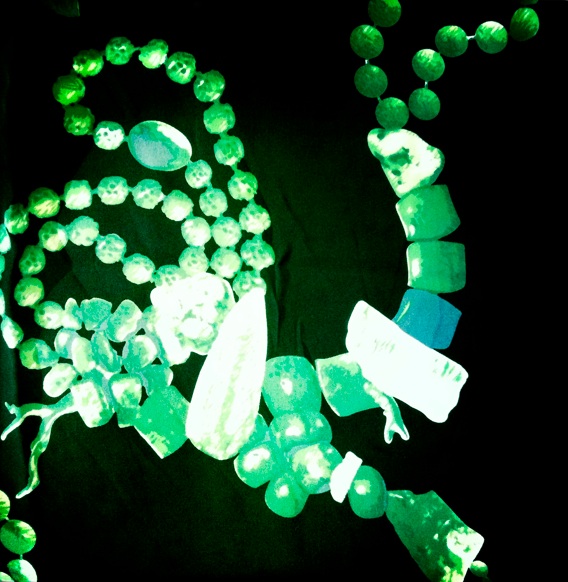 Shanghai Tang textile print: AW 2010/2011. Inspired by jade jewelry.
Shanghai Tang textile print: AW 2010/2011. Inspired by jade jewelry.Prior to Asia, Fabien was a textile designer at Kenzo, a fashion house known for its reverence and mastery of textile prints and colors.
Attracted to the East, Fabien moved to Hong Kong five years ago, working at Shanghai Tang. There, he has nurtured a real print culture.
